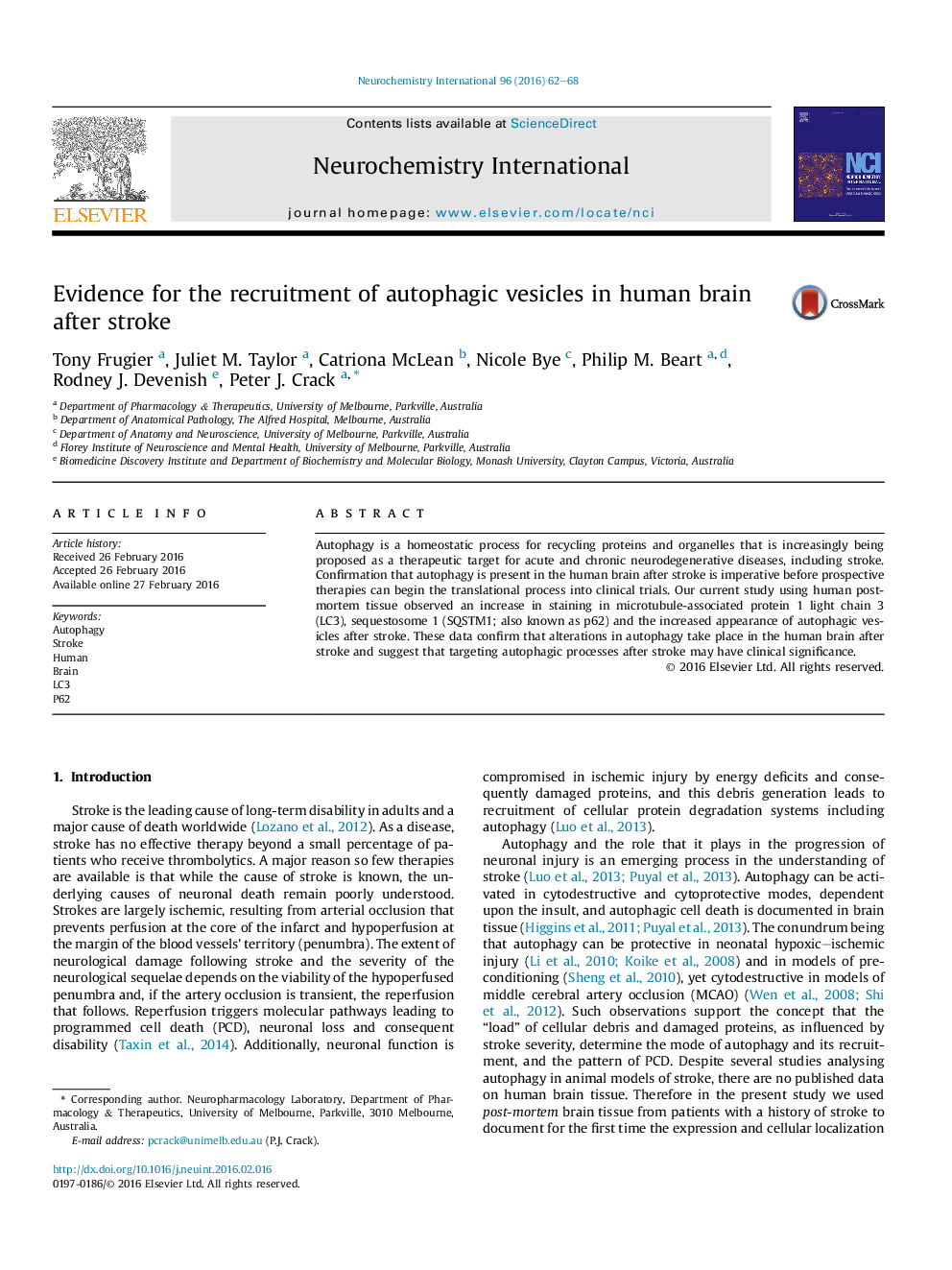| Article ID | Journal | Published Year | Pages | File Type |
|---|---|---|---|---|
| 2200318 | Neurochemistry International | 2016 | 7 Pages |
•The first report of the presence of autophagy in the human brain after stroke.•Observed the increased appearance of autophagic vesicles after stroke in the human brain.•Observed an increase in staining in microtubule-associated protein 1 light chain 3 (LC3), sequestosome 1 (SQSTM1; also known as p62) in the human brain after stroke.
Autophagy is a homeostatic process for recycling proteins and organelles that is increasingly being proposed as a therapeutic target for acute and chronic neurodegenerative diseases, including stroke. Confirmation that autophagy is present in the human brain after stroke is imperative before prospective therapies can begin the translational process into clinical trials. Our current study using human post-mortem tissue observed an increase in staining in microtubule-associated protein 1 light chain 3 (LC3), sequestosome 1 (SQSTM1; also known as p62) and the increased appearance of autophagic vesicles after stroke. These data confirm that alterations in autophagy take place in the human brain after stroke and suggest that targeting autophagic processes after stroke may have clinical significance.
